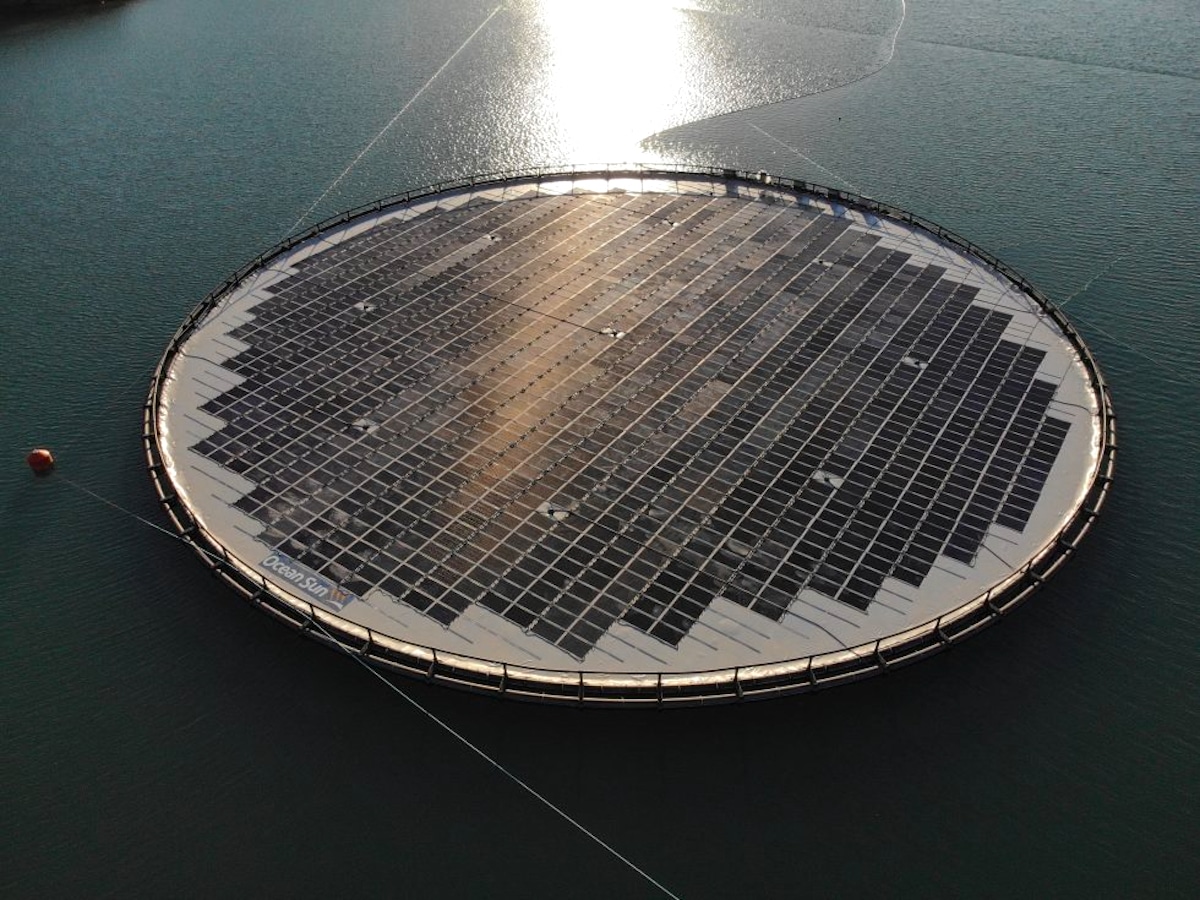Scientists Developing Floating Solar Farms That Can Withstand Rough Oceans

 Why you can trust us
Why you can trust us
Founded in 2005 as an Ohio-based environmental newspaper, EcoWatch is a digital platform dedicated to publishing quality, science-based content on environmental issues, causes, and solutions.
Floating solar farms are solar panels that are installed on the surface of bodies of water — such as lakes and reservoirs — to save space on land or provide electricity to remote locations.
Now, engineers and scientists are beginning to develop ways to put solar farms on the surface of the ocean to bring electricity to isolated places, such as the island nation of Indonesia, where more than a million people are without access to electricity, reported BBC News.
“[I]n this situation it’s hard to connect a cable to them and it’s hard to install other expensive solutions such as wind turbines,” said assistant professor of mechanical engineering at Cranfield University Dr. Luofeng Huang, as BBC News reported.
According to the International Energy Agency, solar is becoming the least expensive choice for the creation of new power plants.
A study published last year in the journal Nature found that if 10 percent of the planet’s hydropower reservoirs were covered with floating solar panels, 4,000 gigawatts of electricity could be generated — as much as all the fossil fuel power plants in the world.
While solar farms may be cheaper, they still use space that could be used for things like farming and housing.
Enter floating solar panels on the surface of the ocean.
“Floating solar is very convenient because it can just be put on top of the water, and if you need more electricity you can put on more solar panels,” said Huang, as reported by BBC News.
The difficulty with floating solar panels on the ocean is the roughness of the waves, which can damage solar panels. New research is being conducted to develop methods for keeping solar panels operative in the high seas.
The best bet may be to keep them closer to shore and away from the 30-foot waves of the North Sea, for example.
“We believe near-shore locations, with more benign sea states, are more attractive,” said founder and CEO of Ocean Sun Borge Bjorneklett, as BBC News reported.
Huang’s research team is developing a different kind of solar power plant offshore that will use a floating breakwater system located upstream from the solar panels to reduce the height of the waves by around 90 percent, said Huang. The waves then enter an enclosed buffer zone that also reduces their power.
The floating solar farms may be the only renewable power option in some places, even though their installation and maintenance will be expensive.
“[I]n Singapore the cost of land is very high and they have already utilised most of their rooftop surface area,” Bjorneklett said, as reported by BBC News. “If they can utilise the ocean surface outside Singapore, it is actually the only way to provide affordable renewable energy.”
One of the largest solar farms in the world is located in China’s Shandong province. The Dezhou Dingzhuang Floating Solar Farm’s 320 megawatt capacity provides solar power to Dezhou, a city of about five million that is around 98 percent powered by solar electricity, reported GreenBiz.
In South Korea, a floating solar project near the Saemangeum tidal flat on the Yellow Sea coast is predicted to be the largest in the world, according to Power Technology. The floating solar plant is expected to provide enough electricity to power a million homes with 2.1 gigawatts of electricity.
Subscribe to get exclusive updates in our daily newsletter!
By signing up, you agree to the Terms of Use and Privacy Policy & to receive electronic communications from EcoWatch Media Group, which may include marketing promotions, advertisements and sponsored content.

 233k
233k  41k
41k  Subscribe
Subscribe 




